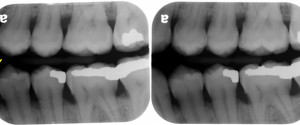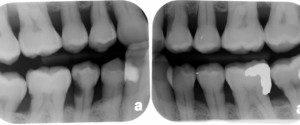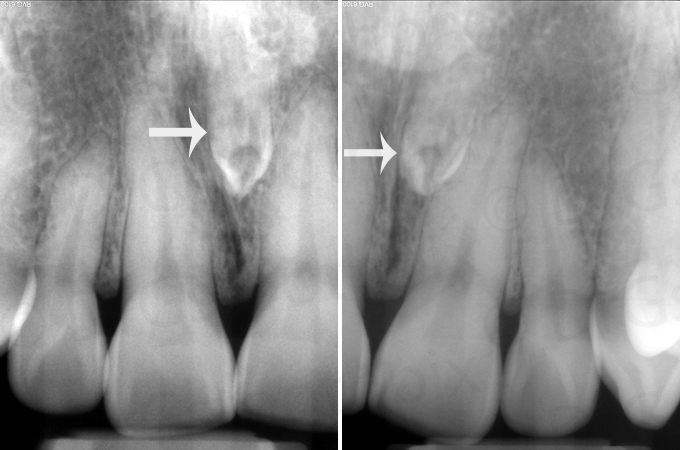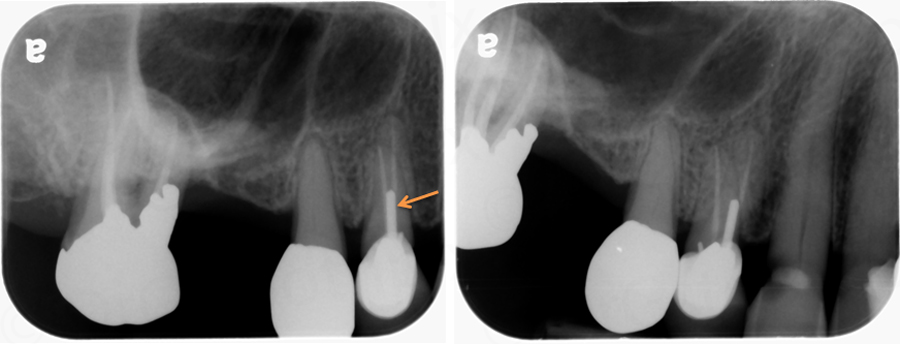Now onto evaluation of bitewing radiographs and what to look for.
1. The teeth to be captured are recorded on the radiograph.
This means that no portion the crown is cut off on the radiograph.

Left – Yellow arrow showing distal half of mandibular canine not captured.
Right – all teeth captured (distal half of canine, first premolar, second premolar, first molar)
2. A minimum of 2 mm of alveolar crest in both the maxilla and mandible are visualized.
For molar bitewing radiographs you should also be able to visualize 2 mm of bone distal to the distal-most tooth on the plane of occlusion.

Right – 2 mm of bone not visualized in maxilla.
3. Less than 1/2 thickness of enamel overlap evident.
The contact we aim to open is as follows
- premolar bitewing radiographs – between the maxillary first molar and second premolar
- molar bitewing radiographs – between the maxillary first molar and second molar
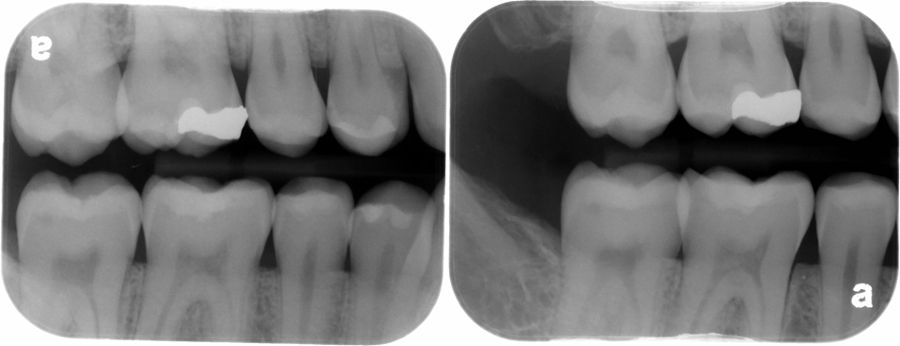
Right – minimal overlap (less than 1/2 of enamel) between maxillary first molar and second molar
If you have any questions or comments, please leave them below. Thanks and enjoy!
